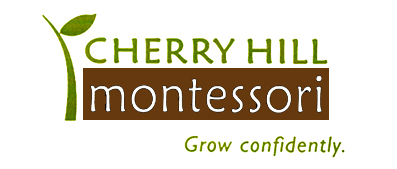The Montessori Curriculum is divided into five basic areas: Practical Life, Sensorial, Math, Language and Social Science. Our classrooms were specifically designed to support our lesson plans for preschool and kindergarten. They also include specially designed Montessori materials in a prepared environment designed to take full advantage of a young child’s self-motivation and level of readiness.

Sensorial
The Sensorial area provides an opportunity for children to see and understand the relationships of color, sound, shape, form, and texture, resulting in the development of the child’s visual, auditory, and tactile senses. Some Montessori materials, such as the binomial cubes, are mathematical concepts that appear in later schooling.
Practical Life
The Practical Life area provides activities from which children develop concentration and muscle coordination and learn to follow direction. Children learn to care for themselves and for the environment around them by participating in daily living tasks, such as pouring, sweeping, and buttoning a shirt. Our Practical Life section helps the child to expand his attention span, and improves hand-eye coordination.
Math
The Math area offers concrete experience in the cardinal and ordinal functions of numbers. The early materials are designed to teach the basics, such as the quantity and symbols of the numbers 1 to 10. Spindle boxes allow the child to see what zero or “nothing” looks like. The children continually manipulate objects in their efforts to understand numeric concepts. The more advanced materials, including bead bars, teach the concept of units (tens, hundreds & thousands) and functions (addition, multiplication, subtraction & division). Children learn to write 1 to 10 and later 10 to 100.
Language
The Language area provides perception and discrimination exercises leading up to the introduction of sounds. Learning materials include objects and pictures to be named, labeled, classified, and matched to aid vocabulary development. Textured letters allow the child to see and feel the alphabet, while the moveable alphabet leads the child towards reading. Once the child begins to blend sounds to make words, a variety of materials are available, ranging from simple three-letter, short-vowel words to read, to materials designed to teach long-vowel sounds, phonograms, and parts of speech. A wide variety of reading materials are used to encourage proficiency and a love of reading. Children are also provided with workbooks, carefully disseminated based on the child’s individual readiness and progress.
Social Science
The Social Science area provides unlimited sources of experiences for children and includes botany, biology, geography, history and music. Science activities are nature-based, and include the study of animals, plant types, and environments around the world. Respect for all life is emphasized. Children are given an introduction to geography through the use of wooden puzzle maps, activities with objects from other countries, and multi-cultural celebrations throughout the year. Songs, stories and games are incorporated into daily routines.
Proper Recreational Balance
We balance your child’s educational development with recreational activities. Located outside the classrooms are beautifully groomed playgrounds containing a jungle gym, sliding boards and a nature trail. Indoor play is conducted in two spacious playrooms containing a wide variety of materials and activities selected for their recreational and developmental content.




